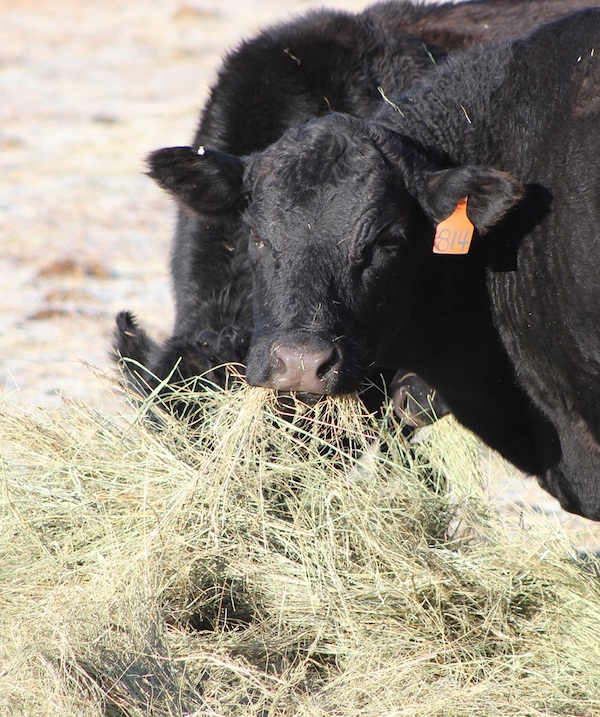Use the Feed Cost CowQLator to Compare Feed Options with Drought Conditions
August 2017

Lack of moisture this summer leaves cattle producers with questions as to what they should do with pastures drying up. Considering alternative feeding options and management practices, may be necessary.
What feed resources would provide needed energy and protein for the least cost? Feeds and forages provide different levels of nutrients to the animal. The moisture content of the feed also needs to be considered. Evaluating between several feeds or forages as to which ones provide the most "bang for the buck" should be a component in determining your feeding strategy. Feeds should be compared on a cost per unit of energy (Total Digestible Nutrients, TDN) and/or crude protein on a dry matter basis consumed by the cow. Doing so allows for determining what the least cost feed source for the cow herd would be.
Nebraska Extension has a tool called the Feed Cost CowQlator, which is an Excel® spreadsheet that allows producers to determine the cost per unit of protein and TDN consumed by the cow. When feed is purchased, stored and fed, loss can occur, impacting the cost of the amount of nutrients that the animal actually consumes and utilizes. Nutrients bought in forage or feed may not actually make it into the cow. The CowQlator tool has input areas to enter the price of feed, cost of transportation, feeding and waste loss. Knowing these numbers allows producers to compare feeds from purchase to consumption by the cow, enabling them to identify where opportunity for change or improvement in feed sources or feeding may be.
In the Feed Cost CowQlator, there is a tool to calculate the total amount of feed needed for the herd based on the feed source used. This can be helpful in planning and purchasing.
With feed being about 40-70% of annual cow costs, managing these costs is critically important. Usually this is a focus during the winter when harvested feed is fed, but with summer drought impacting feed needs, now is a good time to evaluate feed options. What feed strategy will cost effectively meet cattle needs with reduced available pasture? How do drought conditions impact winter feed available and what will cost effectively meet those needs? The Feed Cost CowQlator can help producers answer these questions.
The Feed Cost CowQlator Excel® sheet is available online, as is a tutorial on using the CowQlator. This calculator is also available for mobile devices as part of the NUBeef-cowQlate app.
Reference
Kristen Ulmer and Aaron Berger, Nebraska Extension Educators
University of Nebraska–Lincoln
back to Cow-calf, Bull and Heifer Nutrition and Management